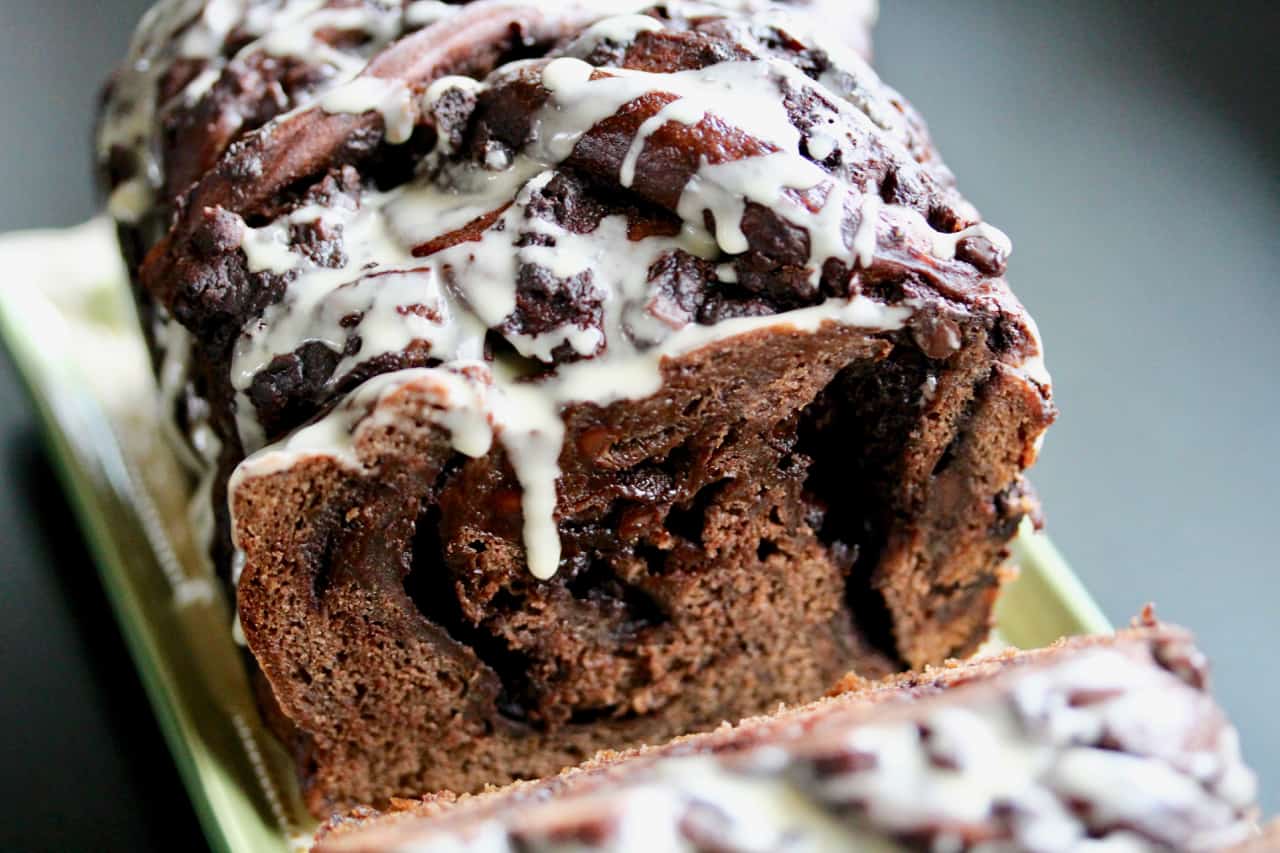
If I was in charge of March, I would decree that St. Patrick’s Day dinners should be heartily enjoyed all month long. This Irish affair would flow with corned beef, colcannon, boxty, shepherd’s pie, and god I would have Irish breakfast every single day. And of course what would follow all of these fine Irish meals? If you said “desserts laced with stout beer, Jameson, and/or Bailey’s”, we should be friends. Of all the liquors in existence in the world (okay, the ones I’ve tried), I fully believe that this Irish booze trifecta pairs better than any other spirits with chocolate and most baking ingredients. I mean, chocolate Bundt cake is made SO much better by all three, not to mention chocolate whiskey pudding and tiramisu enhanced by Bailey’s. I think the evidence speaks for itself that most chocolate desserts will only be made better by the addition of Irish booze. Where am I going with this, you ask? WELL. I’ve been obsessively tinkering with babka dough, specifically chocolate babka dough, for a few months, and I could not be happier to share this Double Chocolate Irish Cream Babka with you. I’ve made no secret of my love for all things Irish, and I feel like this is an ideal Irish-Jewish hybrid dessert, especially in the month of March. Feel free to sprinkle shamrock candies on top. 🙂
I’m feeling pretty proud of myself, as this was a breakthrough babka for me– I think all my future ones will benefit from what I learned making this one. I’ve been trying various things to improve the way the babka bakes because most of my loaves, while still tasty, have been either underdone on the inside or overdone on the edges. The original recipe (which I’ve now strayed pretty far from) is Yotam Ottolenghi’s “Krantz Cakes” from his gorgeous book, Jerusalem, with help from Smitten Kitchen. Both versions say that the babka should bake for about 30 minutes at 375°F, which in my oven yielded collapsed loaves because the interiors were waaaay underdone. I tried increasing the time, then increasing the time and lowering the temperature; I also made some recipes in mini loaf pans, which actually did work really well. But for full-sized loaves, I was stumped. The loaves I was baking for 45 minutes were close, but still not quite right, and they were especially dependent on whether the filling was very wet or more on the dry side…
Then I happened to take a laminated pastry class a few weeks ago at San Francisco Cooking School taught by Avery Ruzicka, the pastry chef/founder of Manresa Bread, one of the best bakeries in the Bay Area. The class had nothing to do with babka, but I remembered that Manresa had recently been posting photos of babka on their Instagram, so I asked Avery after class about my nagging babka problem. She suggested a tiered approach of starting at 375°F, then twice lowering the temperature a smidge and baking for about an hour total. And that was it! That fixed the uneven baking issue, lickety-split.
I was originally going for an Irish coffee flavor, i.e. Bailey’s and coffee, so I added instant espresso powder to both the dough and the filling; I started with 2 teaspoons, which lent zero perceptible coffee flavor, so I doubled it, which helped the flavor be more present, though still very faint. But! This ended up inadvertently being a gift because I hadn’t thought about adding coffee flavor to my chocolate dough experiments before this version, and I found that, similar to a chocolate cake, coffee deepens the chocolate flavor. Going forward, any chocolate babka dough that I make will have a little espresso powder added for better flavor. If you do want a more pronounced coffee flavor, which would be delicious here, you can use a couple of teaspoons or so of pure coffee extract instead of the powder. I was thrilled with the final flavor and didn’t feel that the babka was lacking anything; you’ll notice that chocolate is the primary flavor, but there are definite notes of Bailey’s and coffee.
Whether you celebrate St. Pat’s just on the 17th, or all month long like me, I hope you enjoy this very Irish babka loaf!
Double Chocolate Irish Cream Babka
Yields two 9×5″ loaves
In making babka a bunch of times now, I realized that there were occasions where I was lax on the butter temperature and let it get too soft, which caused the dough to be softer and a little greasy. I used true medium room temperature butter this time, and it really did make a difference in the texture of the dough; the greasier dough was still perfectly usable, but room-temp butter makes the dough easier to work with throughout the process.
For the dough (adapted from Jerusalem with help from Smitten Kitchen, but we’re well past that now):
- 4 cups + plus 2 tablespoons (495g) all-purpose flour, plus 1-2 tablespoons more if the dough is sticking in the mixer
- ½ cup (100 grams) granulated sugar
- ¼ cup + 2 tablespoons (30g) cocoa powder, sifted
- 4 teaspoons instant espresso powder
- 2 teaspoons dry instant yeast
- 3 large eggs, at room temperature
- ½ cup water (cold is fine) and up to 1-2 tablespoons extra, if needed
- 1 teaspoon fine sea salt
- ⅔ cup unsalted butter (150g/5.3 ounces/just shy of 11 tablespoons), at room temperature (see note above)
- Neutral-flavored oil, such as canola or sunflower, for greasing
For the filling (adapted from Jerusalem):
- ¾ cup (130 grams) good-quality dark chocolate, chopped
- ½ cup (1 stick/113g/8 tablespoons) unsalted butter
- 4 teaspoons instant espresso powder
- Scant ¾ cup (80 grams) powdered sugar
- ⅓ cup (30 grams) dark cocoa powder, such as Valrhona
- 2 tablespoons Irish Cream liqueur, such as Bailey’s
For assembly:
- 1 cup (170g) mini chocolate chips
For the sugar syrup:
- 6 tablespoons (75g) granulated sugar
- ⅓ cup water
For the glaze:
- 1 cup (115g) confectioners’ sugar
- 2 tablespoons Bailey’s
- 1 tablespoon heavy cream
Make the dough:
Place the flour, sugar, cocoa powder, espresso powder, and instant yeast in the bowl of a stand mixer fitted with the paddle attachment; mix on low speed for a few seconds until the ingredients are evenly combined. Add the eggs and ½ cup water, mixing on low until just about all the dry ingredients are swept off the bottom of the bowl. Switch to the dough hook and mix on low until the dough comes comes together in a rough mass. The dough may look a little dry, which is fine; if it doesn’t come together at all, add more water, 1 tablespoon at a time, until the dough pulls together. With the mixer still on low, add the salt, then the butter, a tablespoon or so at a time, mixing until each piece is blended into the dough. The dough will start off tight and rigid, and as you add butter, it will loosen and appear sticky/buttery.
Once all the butter has been added, turn the mixer up to medium speed for about 10 minutes until the dough is totally smooth. If the dough gets sticky in the bottom of the bowl, sprinkle in a little flour at a time until it is consistently pulling away from the bowl. (I used 1 tablespoon for this particular version, but usually I need 2 tablespoons.) Scrape down the sides and bottom of the bowl and the dough hook occasionally to make sure all the dough is getting mixed evenly. The dough should be smooth and elastic, with a silky texture, and it should tip out of the bowl fairly easily.
Grease a large bowl with neutral-flavored oil and place the dough inside; cover the bowl tightly with plastic wrap and refrigerate for at least half a day, and preferably overnight. The dough will rise visibly, but will not fully double.
Make the filling:
When you’re ready to use the dough, combine the butter, chocolate, and espresso powder together in a heatproof bowl set over a saucepan filled about ⅓ with simmering water. (The bowl should not touch the water.) Stir it occasionally until the mixture is smooth and fully melted. Meanwhile, sift the confectioner’s sugar and cocoa powder together in a medium bowl. When the chocolate is melted, pour it into the dry ingredients and stir with a rubber spatula until the mixture forms a spreadable paste. Stir in the Irish Cream liqueur. Let the filling cool to room temperature before spreading it on the dough.
Assemble the babka loaves:
Grease two 9×5″ loaf pans and line each with a large piece of parchment paper that covers the bottom and hangs over on all sides. This ensures that a) any oozing filling will stay contained in the pan, and b) the loaves are easy to pull up and out of the pan.
Remove the dough from the fridge and cut it in half, then return the other half to the fridge. Gently shape the dough into a rough rectangle with your hands if possible. Roll it out on a well-floured work surface such that one side is about 10″ wide (the side closest to you) and as long in length as you can get when rolling it about ¼” thick, about 10 to 12″. If your sides are uneven, trim any rogue edges and patch deficient areas, such as corners that are too rounded– it totally doesn’t matter if the patchwork isn’t perfect, since you’ll be rolling the whole thing up and any flaws will be hidden. (Mine was roughly a rectangle shape once I patched my corners.)
Spread half of the chocolate mixture evenly over the dough with a small offset spatula, leaving a ½” border all the way around. Sprinkle half of the chocolate chips evenly over the filling. Brush the end farthest away from you lightly with water. Starting with the short edge closest to you, carefully roll the dough up with the filling into a long, tight log, trying to roll evenly so that the log’s thickness is fairly uniform in the center and out to the edges. Seal the dampened edge of the log. Gently place the log on a sheet pan or tray and place it in the freezer for about 15 minutes or so while you work with the second piece of dough. Remove the second piece and repeat the rolling, filling, and rolling up process; put it in the freezer and retrieve the first log.
Trim about ½” off each end of the log. Gently slice the log in half lengthwise with a sharp knife and lay the halves next to each other on the counter, cut sides up. (Take a moment to behold the beauty of your handiwork!) Lay one piece across the center of the other at an angle, so that the dough halves look like an ‘X’. Twist the pieces around each other, keeping the cut sides facing out as much as you can. Carefully transfer the twist to a prepared loaf pan, wedging it in and forming an “S” shape if needed. You can place the ends that you trimmed into any gaps in the pan– it’s okay if this looks messy or not especially pretty; the dough will fill in any holes by the time it’s done rising and baking.
Repeat the above process with the second dough log in the fridge. Cover the pans with a damp tea towel and leave them to rise for about 90 minutes to 2 hours at room temperature. They will rise only a tiny bit, but will puff considerably in the oven.
Bake & finish the loaves:
After the babkas have been rising for about 60 minutes (or later on a cold day when the proofing is likely to take longer), preheat an oven to 375°F and place a rack in the center. Remove the tea towel and move the pans into the oven side by side. Bake the loaves for 25 minutes and tent the pans loosely with aluminum foil around now, or whenever they appear to be browning too quickly. Reduce the oven temperature to 350°F for 15 minutes, then reduce to 325°F and bake another 10 minutes, for a total of about 50 minutes. It may require a little trial and error in your oven, but this is what finally produced the ideal dough texture that I was looking for.
Cut on the day of baking, the babka is soft, tender, and moist, but should be fully cooked in the center; it’s a bit difficult to check for doneness because a skewer inserted into the babka will come out with the melty chocolate filling on it. (However, underbaked babka dough will feel stretchy/rubbery inside and the skewer may come out with dough on it. When it’s fully baked, you’ll feel almost no resistance, despite the filling on the skewer.) If the babkas need more time, bake them for another 3 minutes at a time and re-test. Transfer the babkas to a wire cooling rack. The tops of the loaves should be dark brown and slightly puffed.
While the babkas are baking, make the sugar syrup. Stir together the sugar and water in a small saucepan and bring the mixture to a simmer, stirring until the sugar dissolves. Remove the pan from the heat and let it cool a bit. As soon as the babkas exit the oven, brush the syrup all over them. It will seem like way too much, but it really is the right amount for glossy, moist loaves, so do use all of it. Let the babkas cool for about 45 minutes in the pans, then pull them out using the overhanging parchment paper. Transfer them directly to the cooling rack to cool completely.
Make the glaze:
Combine the confectioners’ sugar, Irish cream liqueur, and cream in a medium bowl and whisk together until smooth and ribbony. To adjust the consistency, you can make it thicker by adding more confectioners’ sugar, or thinner by adding more cream.
Drizzle the glaze over the cooled loaves and allow it to set for about 30 minutes.
Store the loaves in an airtight container at room temperature for up to 2 days, or store them in the freezer in ziplock bags.
© Dafna Adler & Stellina Sweets, 2018.
SaveSaveSaveSaveSaveSave
SaveSave








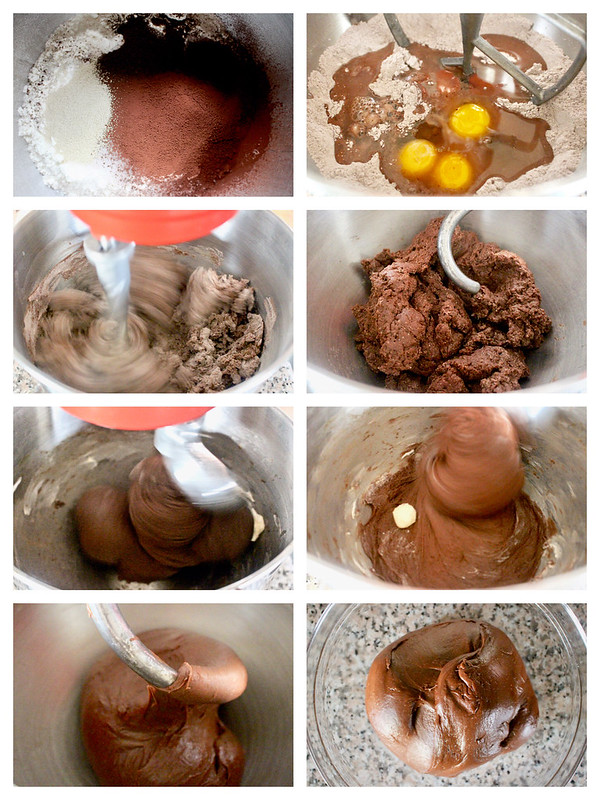
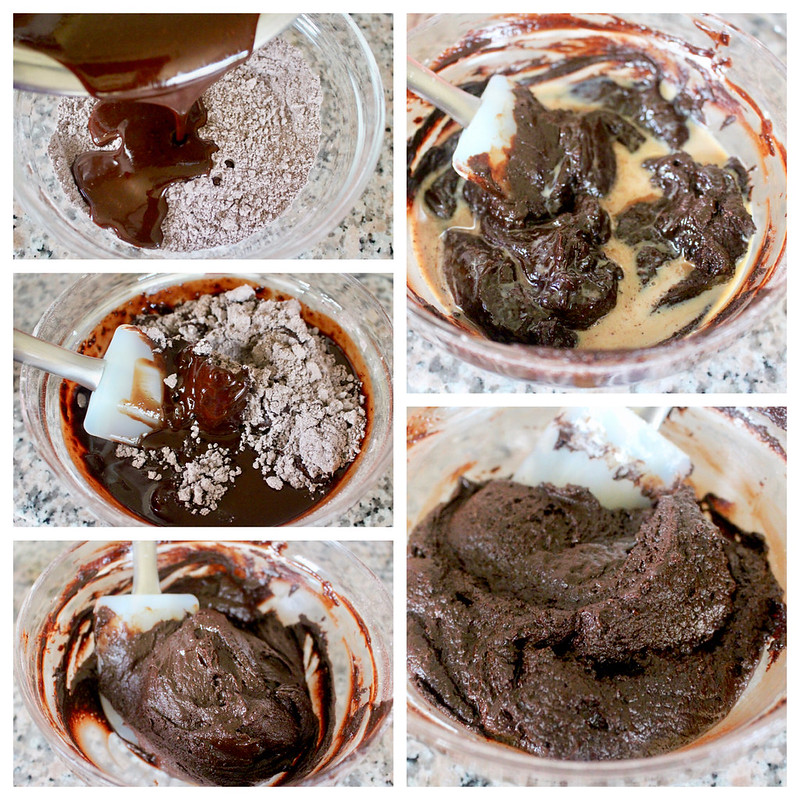
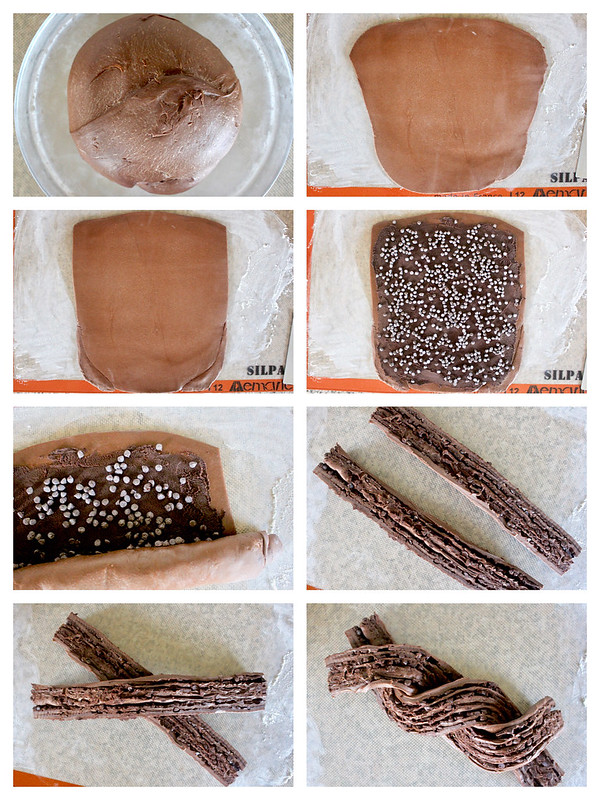



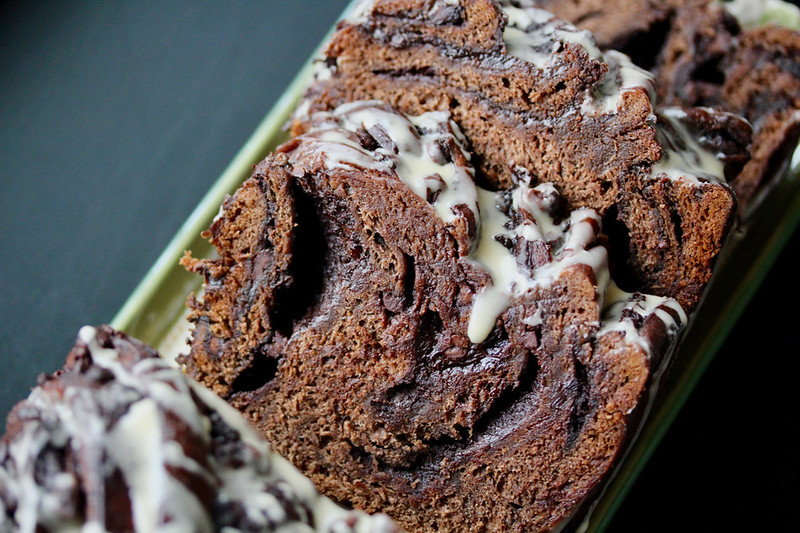
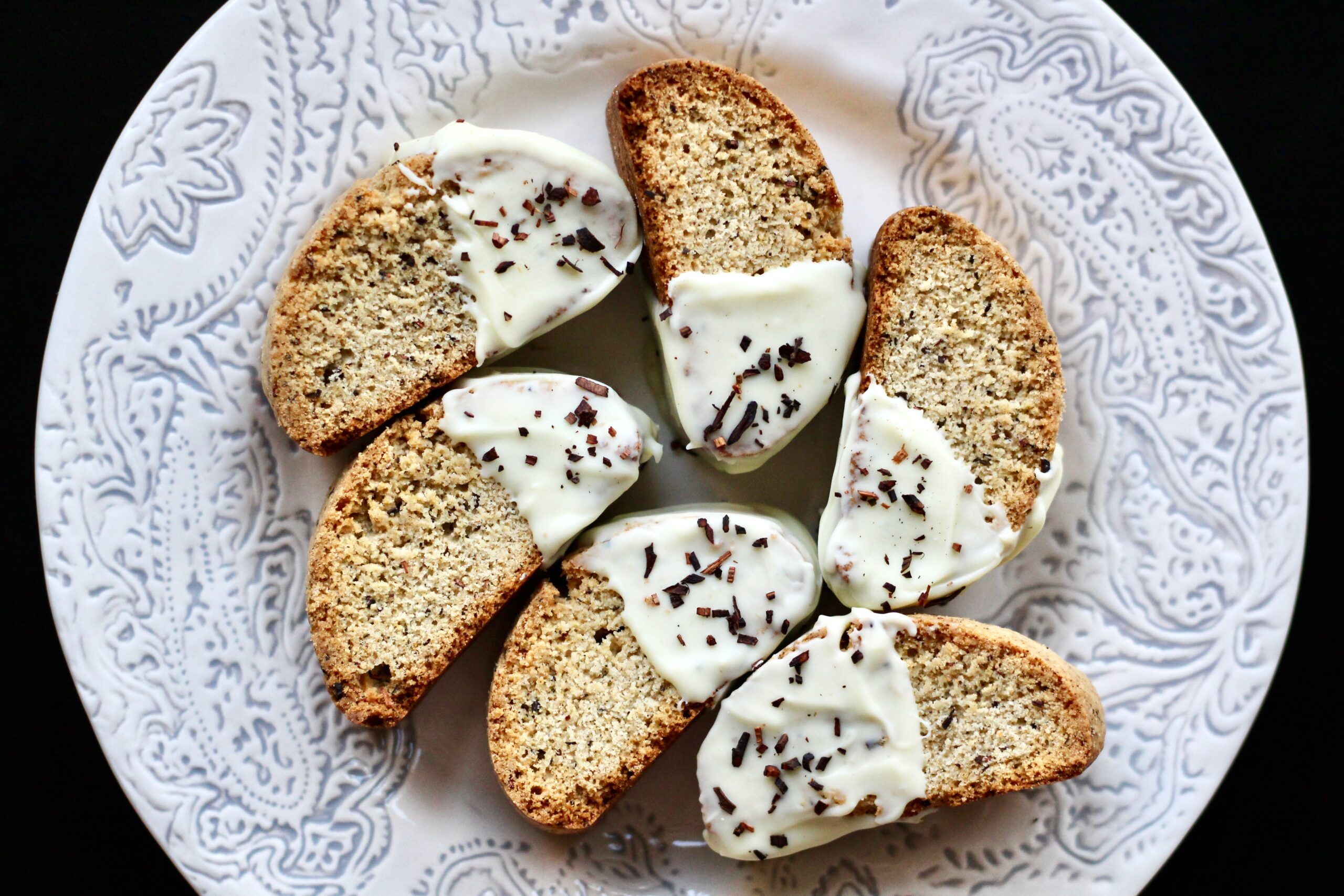
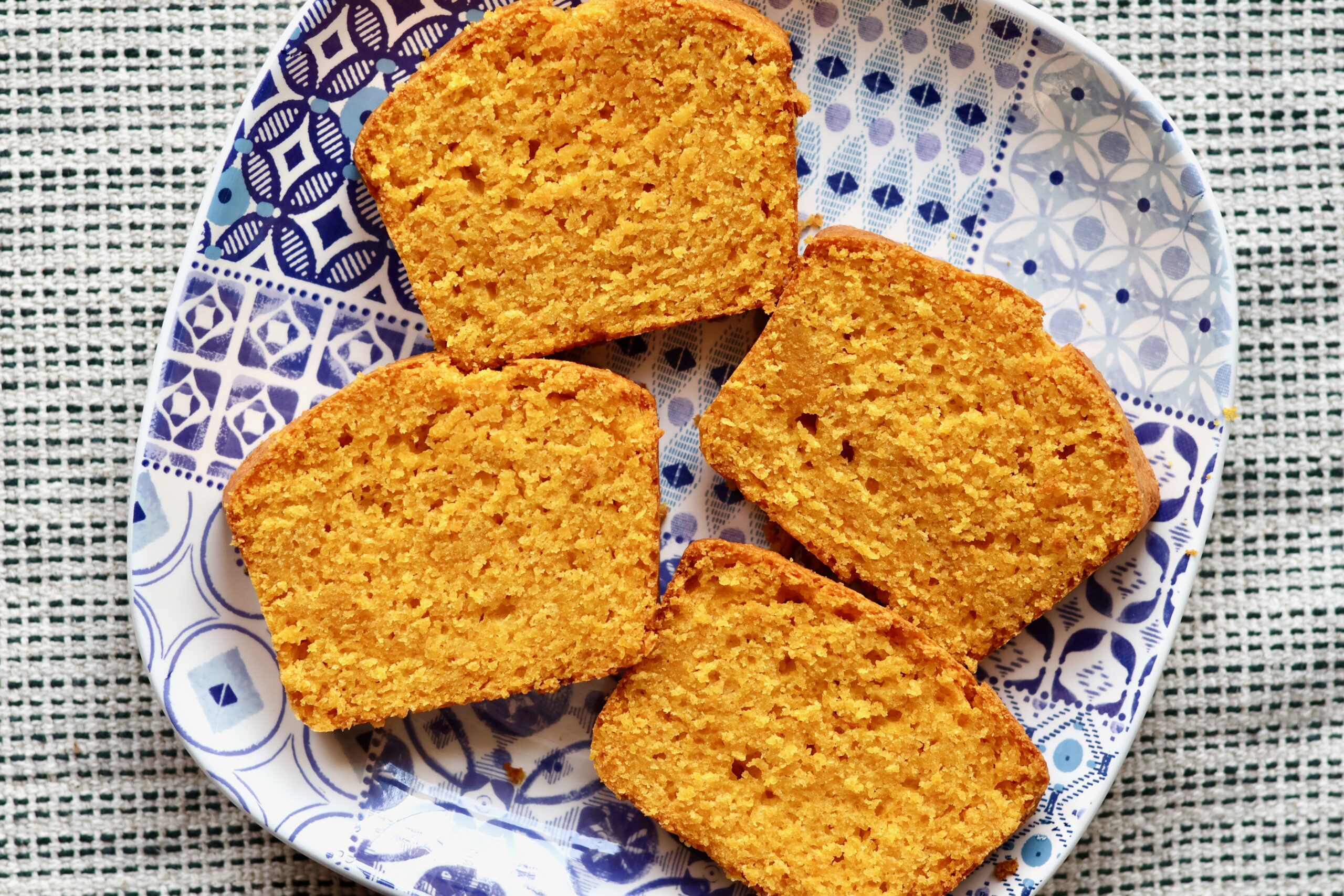
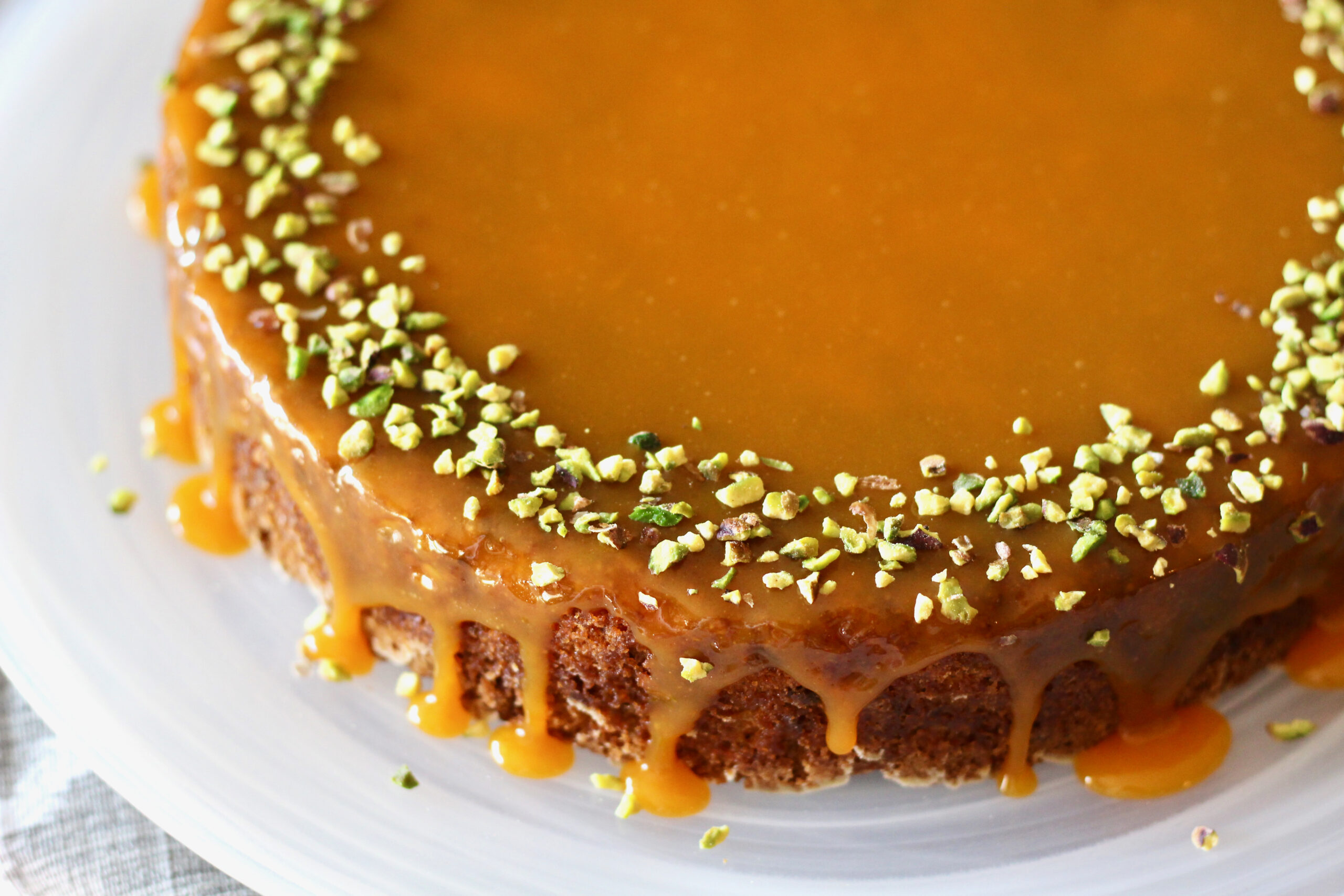
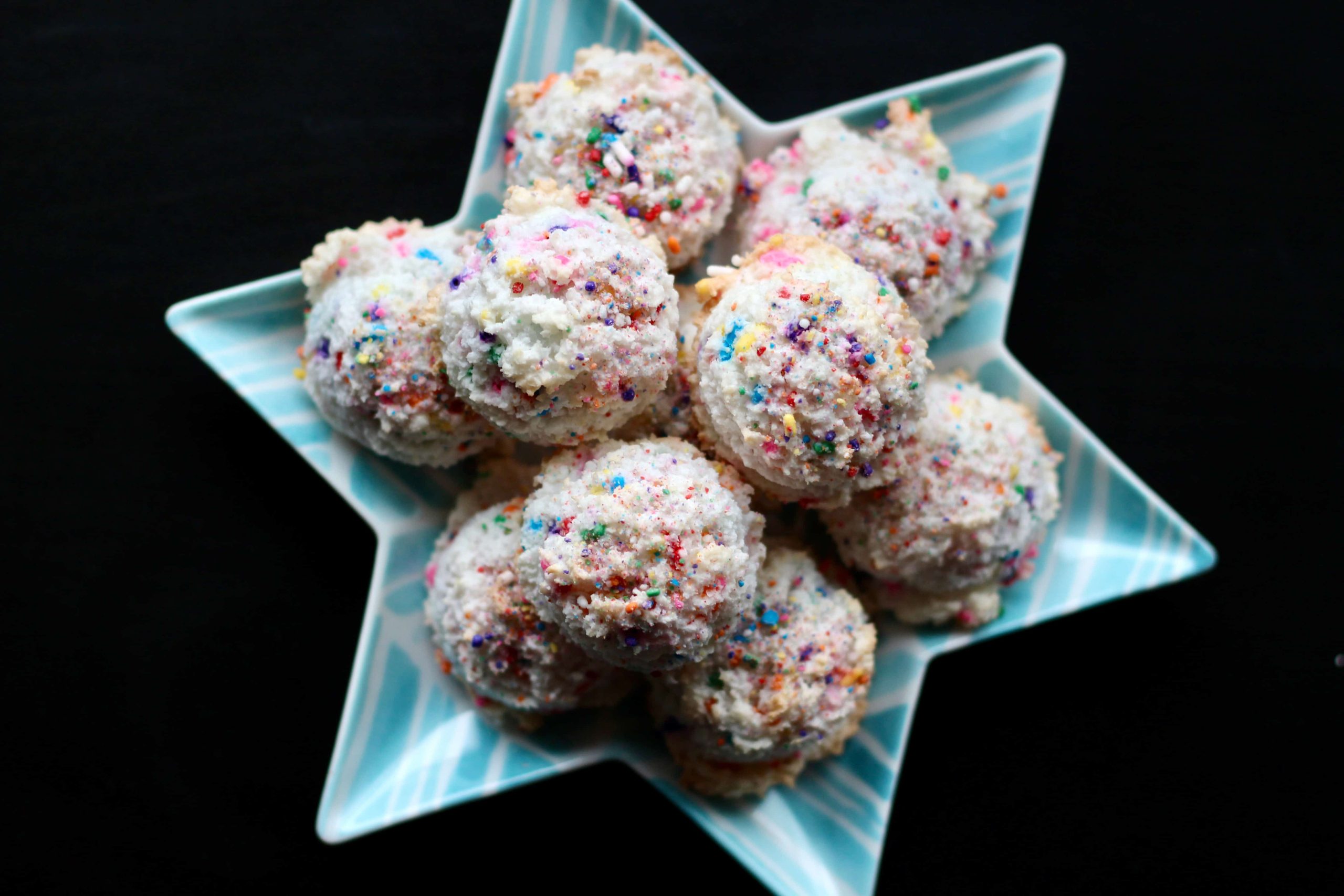
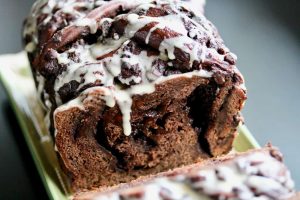

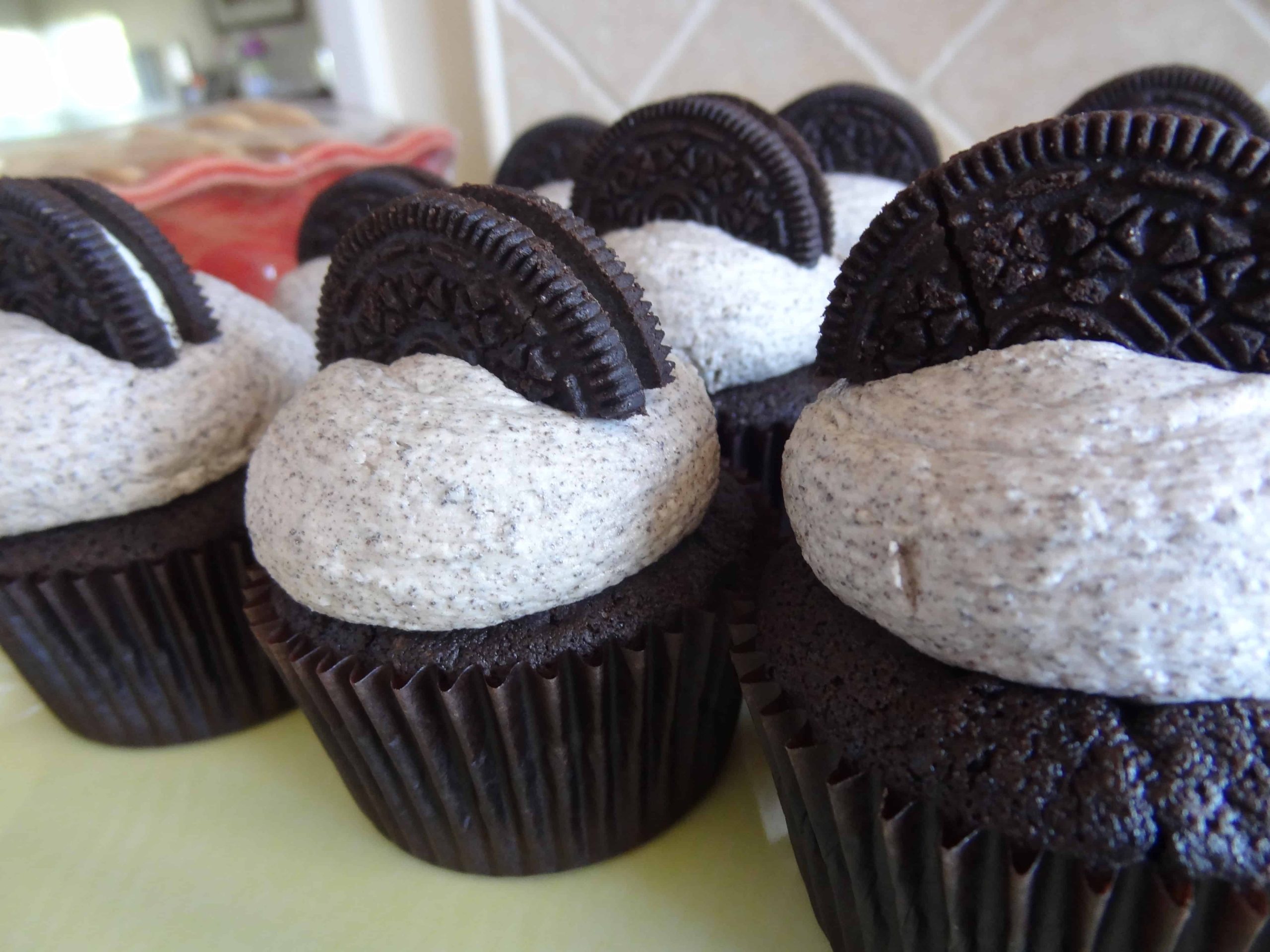

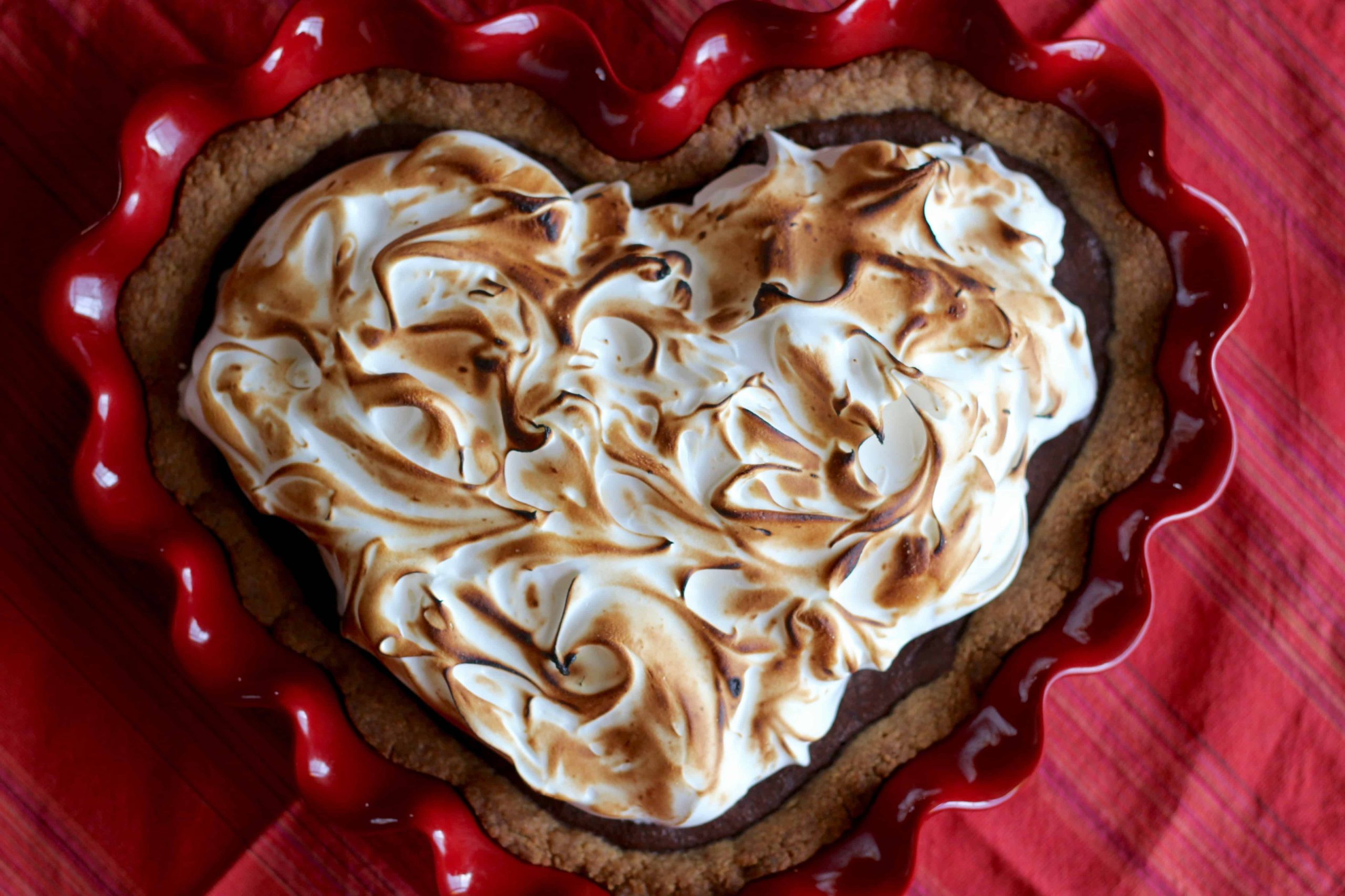
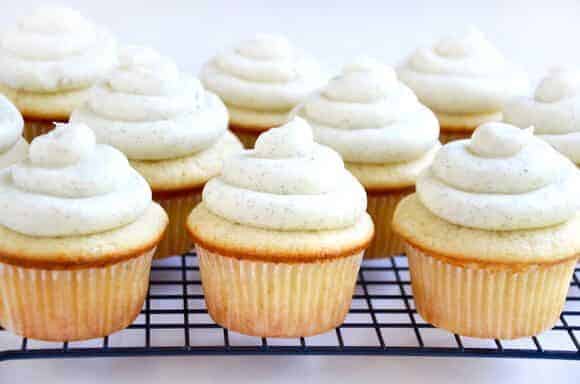
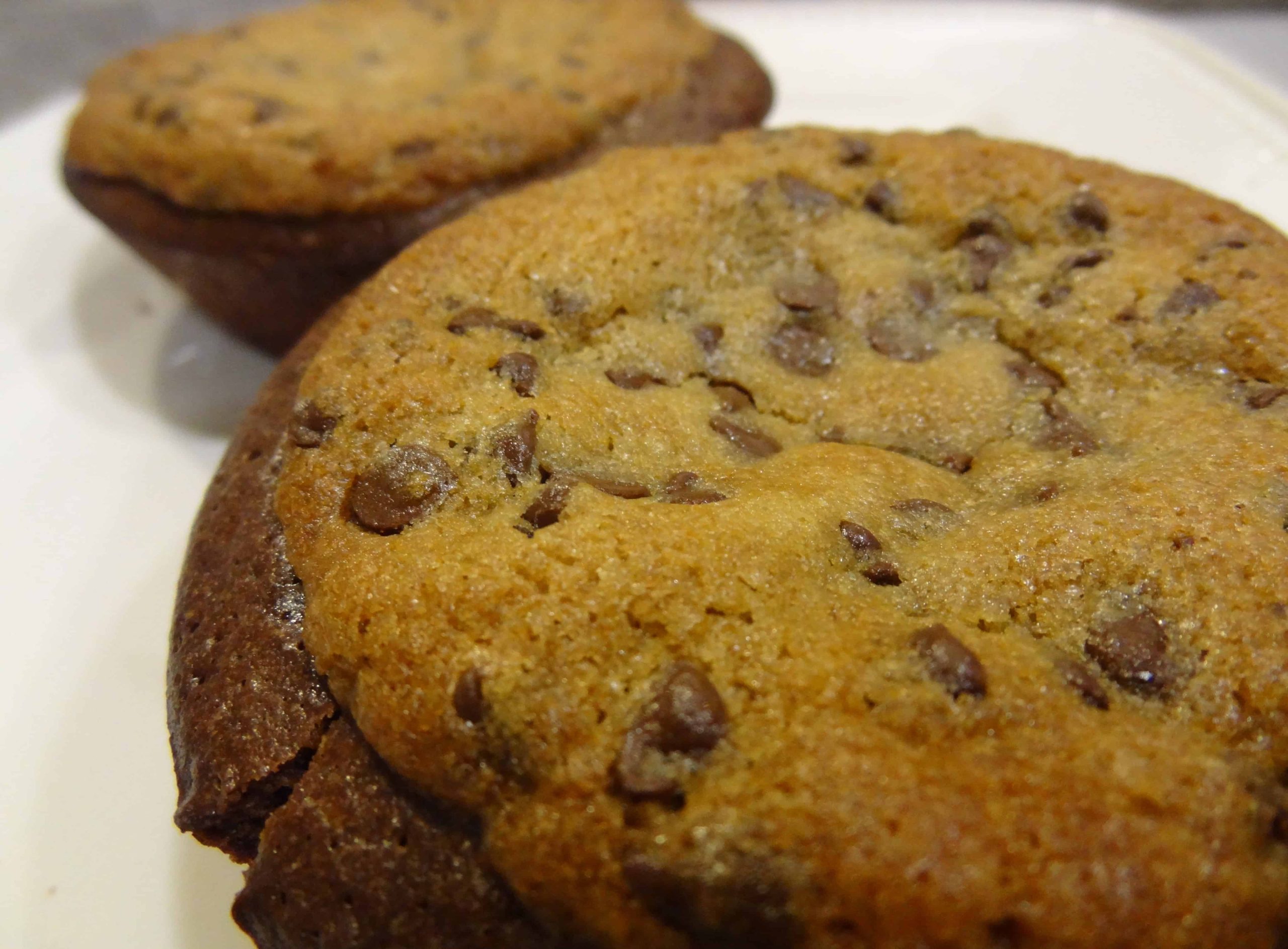
2 Responses
Looks too yummy 🙂